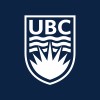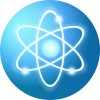
The Effect of an Inpatient Home-work Exercise Program on Leg Function After Stroke
Cerebrovascular Accident (Stroke)This study would focus on a new method of adding extra leg homework exercises to the usual therapy delivered in the hospital. We propose to design an exercise program for the affected leg that would be given to the client as homework and done in the client's hospital room or ward. The program would be designed and monitored by a therapist that works in the hospital.

Family-centered Support Program for Caregivers of Stroke Survivors
StrokeCaregiver BurdenThe goal of this study is to evaluate the effect of a family-centered support program on the care burden, depressive symptoms, perceived social support, and quality of life of stroke survivor' caregivers and on care recipients' rehabilitation adherence and depressive symptoms.

Upper Limb Exosuit for Clinic Assistance
StrokeAim is to do a feasibility and refinement trial to assess the safety and comfort of the robotic device and their preliminary effect on muscular activity during the performance of activities of daily living. The study was carried out with 10 stroke participants who had to carry out a series of 10 functional tasks with and without the suit over 3 sessions. The results are encouraging and show the potential of using wearable robotic devices in a clinical setting.

Home-based Non-invasive Brain Stimulation and Hand Tracking Rehabilitation for People With Chronic...
StrokeThis is a device feasibility study, which will assess telerehabilitation in people with chronic stroke using a combination of noninvasive brain stimulation and finger tracking training. Telerehabilitation allows patients to train in their own home which also allows for longer training periods than what is currently allowed clinically. Noninvasive transcranial direct current stimulation (tDCS) uses two surface electrodes connected to a small battery that will be attached to the head. This will be used to modulate neuronal excitability. With sensors attached to fingers and the wrist, the patient will move the joints to track a target displayed on a screen. The combined treatment will be applied in two experiments. The first will be on 3 patients coming to our lab and the second on 3 patients in their home, both under supervision. We will integrate the two components and test the resulting and novel treatment system for technical feasibility, which will set the stage for future efficacy studies under federal grant support. We hypothesize that the developed system will be safe and feasible.

Stroke and Traumatic Acute Brain Injury Line Indicator System for Emergent Recognition (STABILISER-I)...
Ischemic StrokeHemorrhagic Stroke1 moreIn the search for a novel marker of stroke that could be rapidly assessed in blood, the investigators developed a point-of-care (POC) lateral flow device (LFD) that rapidly (< 15 min) detects levels of a biomarker that is released into blood following neuronal injury associated with stroke and traumatic brain injury. The protein's expression in human brain should serve as a useful biomarker of neuronal injury in stroke and traumatic brain injury.

Refinement and Clinical Evaluation of the H-Man for Arm Rehabilitation After Stroke
StrokeLocally, stroke remains the 4th cause of death, causing 8.4% of deaths annually in Singapore, and a leading cause of neurological disability worldwide. Nearly 40% of the stroke survivors will require specialized rehabilitation. In recent years, robot-aided therapy has been proposed as a means of complementing traditional therapy to alleviate the burden on therapists and on the healthcare system. For shoulder/elbow rehabilitation, dozens of robots have been proposed in the literature but only half a dozen have been commercialized and typically none are seen in local clinics, due to exceedingly high costs. A novel, compact, inexpensive robotic interface, named 'H-Man', was recently designed and developed at NTU for experiments in motor control neuroscience. The H-man can generate computer-controlled force fields to assist or resist a subject's motion and is potentially an optimal trade-off between clinical efficacy and robotic complexity. A first prototype of the H-Man is available at NTU.The primary aim of this proposed project is to assess to what extent the investigators H-Man is suitable for rehabilitation purposes using a feasibility pilot clinical trial design involving stroke survivors. The investigators believe that H-Man can be used for neuro-rehabilitation of stroke patients with hemiparetic weakness, motor incoordination and motor ataxia of the upper limbs.In close cooperation between clinicians at the TTSH and NTU engineers, a portable version of the H-Man will be developed which will be tested in a 12 subject Pilot study, refined and then used in a 44 subject Randomized Controlled Trial (RCT) study. At the same time, the feasibility of H-Man integration for a pared down home use model will be assessed in 4 subjects. The investigators primary hypothesis is that sub-acute/chronic patients will exhibit clinically significant decreases of impairment when training with the H-Man combined with standard arm therapy on robot-measured scales and standardized clinical scales, at the level of elbow/shoulder after 18 sessions of training on the H-Man.

TeleRehab for Stroke Patients Using Mobile Technology
StrokePost-stroke communication deficits (PSCD) are a common symptom of patients having sustained a stroke. These deficits include difficulty to produce or understand language, motor speech disorders and cognitive-communication disorders. It is estimated that approximately 40% of stroke survivors will have communication disorders post stroke. In this randomized controlled study, the investigators' objective is to test the value of providing a mobile platform-based Speech Language Therapy (SLT) program to patients discharged from an acute care hospital with stroke and PSCD and awaiting outpatient rehab services versus standard of care treatment. The investigators will offer iPad-based SLT/standard of treatment to a convenience sample of 20 patients with post-stroke communication deficits. The primary outcome will be feasibility (recruitment rate, adherence rate, retention rate, and protocol deviations), and the secondary outcome will be improvement in PSCD.

Stroke Oral healthCare pLan Evaluation
Cerebrovascular DisordersStroke2 moreStroke associated pneumonia (SAP) affects a fifth of stroke survivors annually, tripling the risk of death at 30 days and contributing to poorer rehabilitation outcomes, prolonged hospital stays and dependency at discharge. Systematic review evidence indicates that enhanced oral health care (OHC) has a preventative effect on the incidence of pneumonia amongst nursing home populations (absolute risk reductions 6.6% to 11.7%; numbers needed to treat 8.6 to 15.3 individuals). There are strong theoretical reasons to suggest similar benefits might be observed in stroke care settings but current empirical evidence is weak - trial quality (randomisation, blinding, sample size, reporting), intervention description and thus feasibility of translation into clinical practice is very poor. Following an extensive pre-clinical programme of work, investigators now plan the pilot phase (Phase II) of a stepped-wedge cluster RCT of a well-developed and defined complex OHC intervention versus usual OHC. Investigators aim to establish a robust web-based randomisation process, refine the proposed intervention (training, tools, equipment), recruitment, adherence, record linkage and sampling methodologies. Investigators also aim to establish the relationship between SAP and plaque and any diversity between sites.

Combined Brain and Peripheral Nerve Stimulation for Stroke
StrokeCerebrovascular disease is a major cause of disability worldwide. The catastrophic burden of stroke is more dramatic in low- and middle- income countries, and the scarcity of evidence-based rehabilitation interventions represents a major challenge to global health care. Upper limb weakness is frequent after stroke, but there is no universally accepted treatment to effectively improve hand function in patients with moderate and severe motor impairment. These are the patients in deepest need of rehabilitative interventions. This project addresses this important issue, by testing effects of a novel approach. We will non-invasively stimulate the brain and peripheral nerves in order to enhance effects of motor training aided by an electrical stimulation device in patients with moderate to severe hand weakness. Our hypothesis is that brain stimulation, when added to peripheral nerve stimulation, will enhance effects of motor training to a greater extent than brain stimulation alone, peripheral stimulation alone, or no stimulation.

Facilitating Implicit Learning to Improve Neurorehabilitation in Stroke
Cerebral StrokeStroke is one of the leading causes of chronic disability in Veterans. Stroke is associated with significant loss of mobility, increased risk of falling, cardiovascular disease, depression and neuro-cognitive impairment. These deficits negatively impact the independent completion of the Activities of Daily Living (ADLs). Task-oriented training has emerged as the dominant therapeutic intervention in the rehabilitation of chronic stroke victims. The effectiveness of these interventions may be enhanced through facilitation of implicit knowledge rather than explicit knowledge. Specifically, implicit learning increases retention and improves transfer of the improved motor function outside of the lab environment. Moreover, implicit motor control reduces the burden imposed on cognitive resources as the skill is performed automatically (i.e. do not have to 'think' about it). The amount and type of feedback individuals receive while learning a new task (or relearning in the case of rehabilitation) has been shown to influence the type of learning (i.e. implicit or explicit). Thus the purpose of the current study is to determine the effect of different types of feedback during motor learning on the learning type and the resultant impact on functional outcomes (i.e. motor performance, retention, and cognitive workload) in chronic stroke patients.
